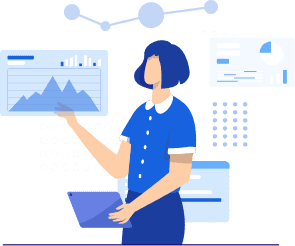Subscribe to Our Newsletter
Stay updated with the latest tips and strategies. Get additional discounts and alerts on offers.
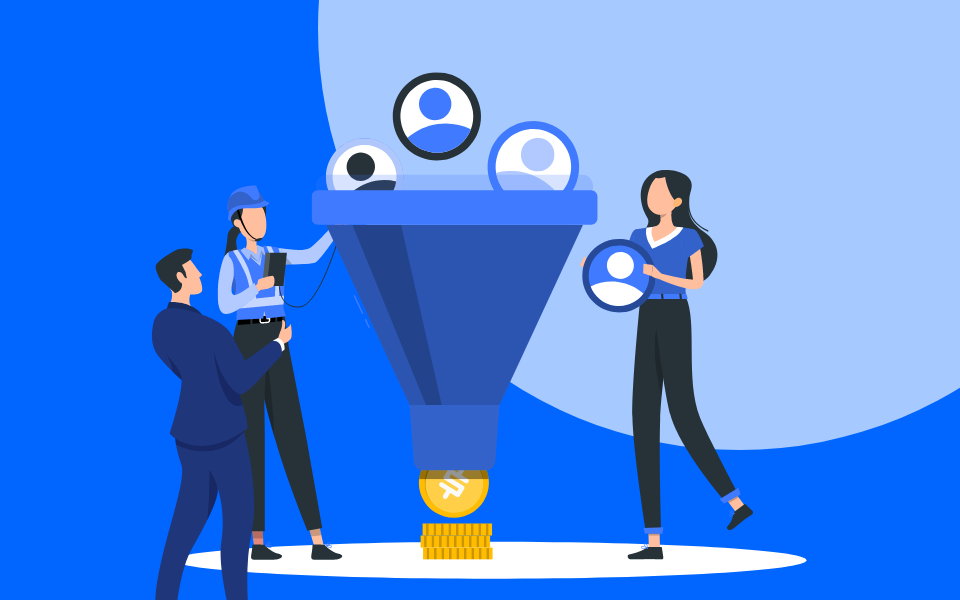
Have you ever wondered why building a B2B sales funnel is of utmost importance? The B2B industry has grown to new heights over the past few years. The Internet has changed how B2B clients buy, and the marketers must also change how they pursue a new breed of buyer that is more technologically advanced. You can do this by understanding your B2B sales funnel and its effectiveness gives your business a competitive edge over the others. This way you will get valuable insights into optimizing the sales process and converting more leads.
Your sales funnel will act as the most valuable guide to boost your results. Before you design a sales funnel for your company, you should investigate your market, figure out what you are missing, find out what your competitors are doing wrong, and then implement all those in your sales funnel.
With the help of B2B sales funnel, you can establish the different stages that business representatives might go through; this usually starts with the first contact to the time you purchase the products or services yourself. A well-structured B2B sales funnel will help your company recognize how to better optimize and refine your sales process and gain a deeper understanding of what your client journey is like.
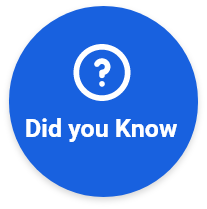
According to a study, over 68% of B2B businesses still don’t have a proper understanding of their own sales funnel.
Most companies don’t know if they are reaching the right audience at the right time and with the right content. This blog will discuss what a basic B2B sales funnel looks like, its benefits, and it’s stages. You will also learn how to use your B2B sales funnel and the buyer’s journey to gain revenue.
B2B sales funnel is to intentionally guide prospects on a path from introduction to your company and ultimately to the sale. A well-planned sales funnel will enable your company to define its goals and take the right actions towards its end goal.
It usually comprises several stages and is a multistep process to keep the leads aware of your company’s value and convert them into sale. It depicts how leads move through the buying process of the B2B sales pipeline.
One B2B sales funnel example is that when salespeople interact with those leads at several stages to persuade them to make a purchase, a sales funnel can have three or more stages depending on the business, while there is no true one-size-fits-all model as every sale funnel functions in the same way.
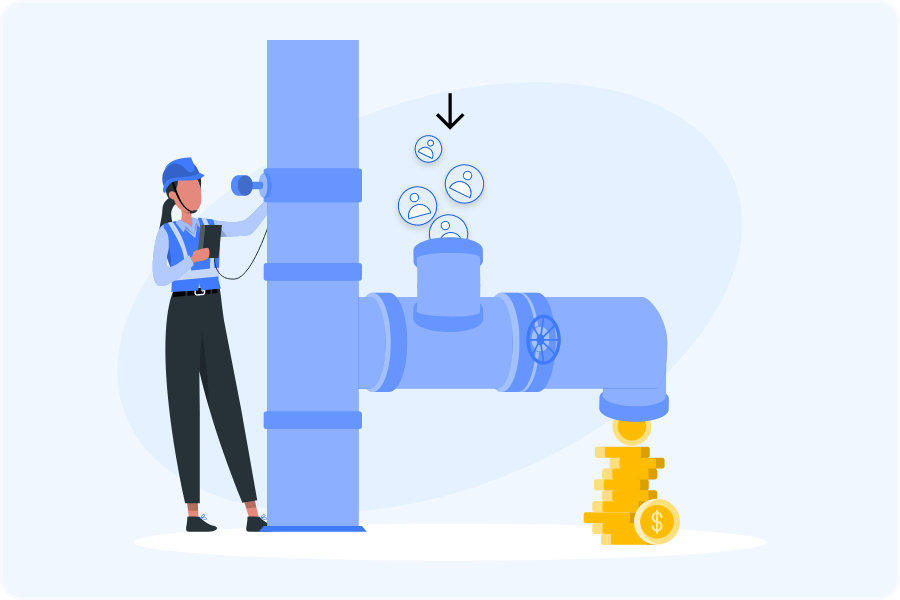
After the product demo, the sales representatives will follow up with leads until they complete the purchase. Here the prospects make the final decision of purchasing or investing financially into your offerings.
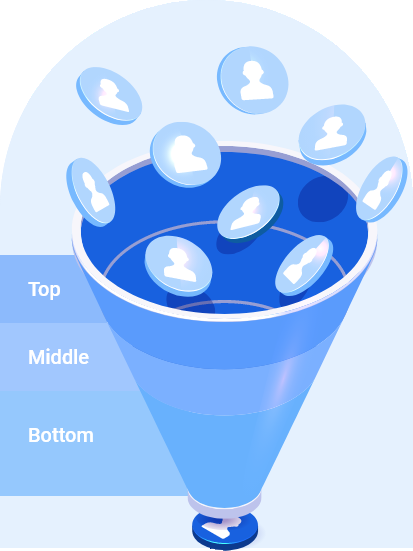
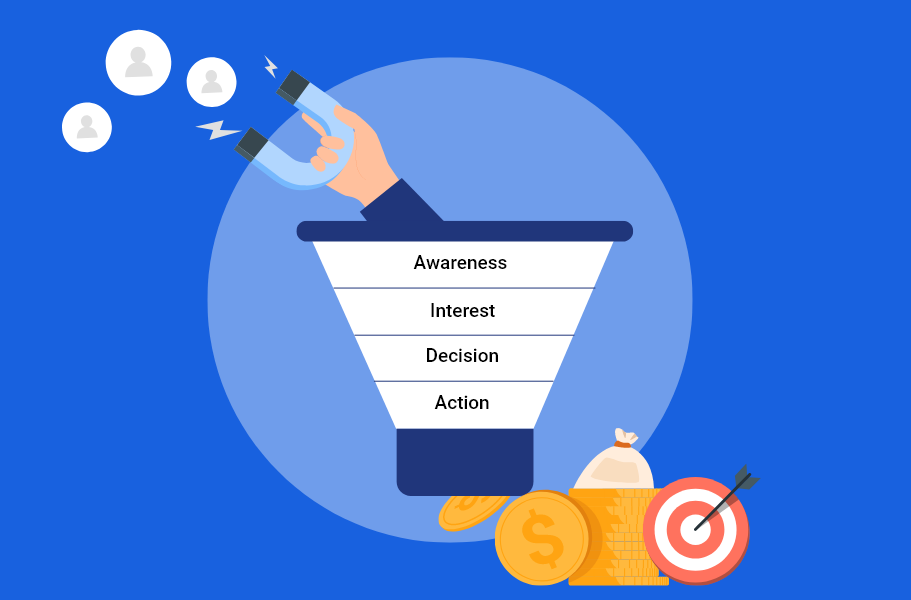
The first step of planning your B2B sales funnel is identifying your buyer’s personas. Once you have the buyer’s persona, you can tell what your target audience likes, dislikes, expects, is motivated by, or even their pain points. Based on this data you can create a targeted marketing campaign specially curated to attract the target audience.
The cost of products or services tends to be higher.
B2C customers purchase the products for personal use and may make impulsive decisions.
The first B2B sales funnel stages was said to be devised in 1898. It usually starts with the awareness stage, where people become aware of a brand, product, or service. The chance of capturing the attention of leads is minimal as an average person only spends 37 seconds looking at an article.
All the B2C sales funnels contain only four stages, usually called AIDA: Awareness, Interest, Desire, and Action, whereas the B2B sales funnel has additional stages such as evaluation and engagement. B2B funnel model is for B2B businesses to observe the different strategies involved in converting a lead into a customer. And for that to happen, keep evolving and follow stages.
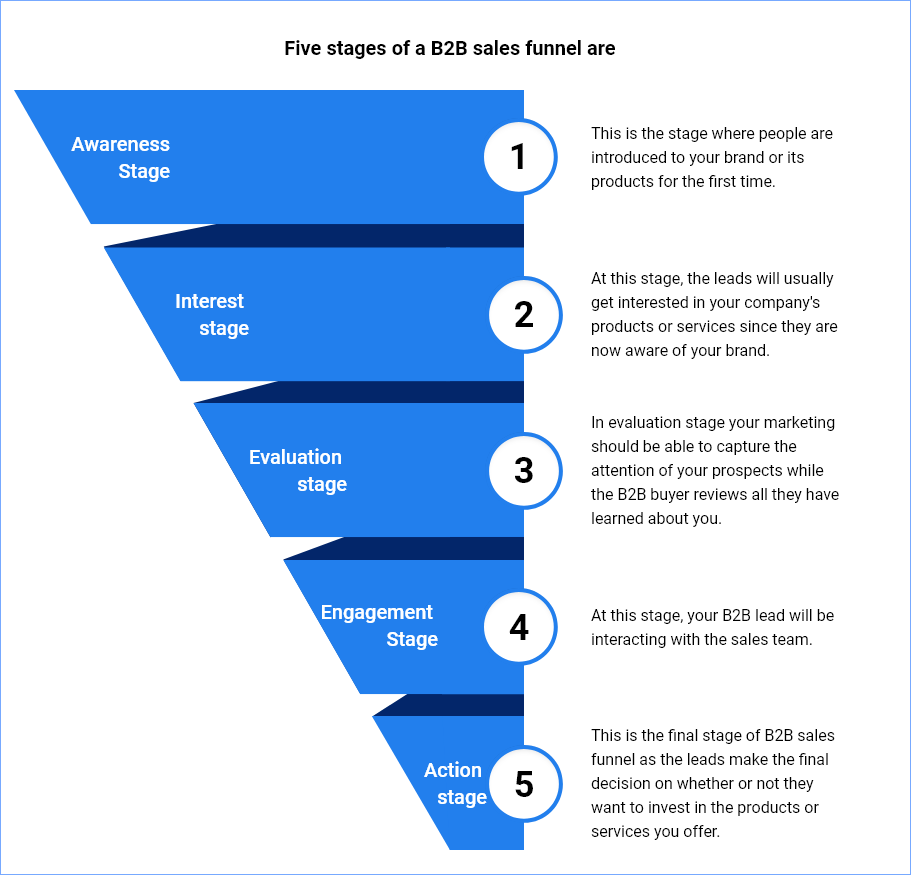
This is the B2B marketing funnel stage where people are introduced to your brand or its products for the first time. Here B2B customers are looking for answers, and you can provide them with resources, educational content, opinions, and insights to solve their problems. The value of the awareness stage is low since they are not guaranteed leads at this point, as most are seeking out products or services to solve a problem.
But you can convert them into high-priority leads by nurturing them further down the sales funnel by providing them engaging content with valuable and informative content. The client’s problem may be simple or complicated, like finding a lead list to generate more sales or software that integrates their front-end and back-end operations. You should be ready with relevant high-level information to win them over and get them interested in your company’s offerings.
The content you provide must be targeted to your audience and offer them a solution to the problem they are facing in the form of blog posts, ebooks, checklists, infographics, etc. An example of this stage is when a prospect finds your blog, gets introduced to a brand or its products, and then reads more about the products or services the brand offers.
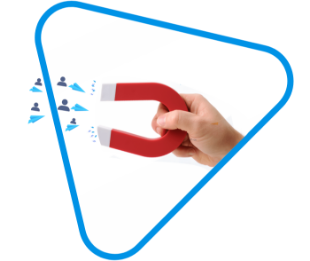
This is why you must ensure that your products or services stand out from the crowd and solve clients problems better than your competitors. This is the first stage in the buying process where trust is formed between the clients and the brand. Make sure that the content you provide is unique and includes discounts, exclusive offers, and a number of calls to action.
In the evaluation stage, your marketing should capture your prospect’s attention while the B2B buyer reviews all they have learned about you. As they are evaluating your products, you have to make sure that the solution you are providing is optimal for their needs. Your company must display honesty and integrity, which will pay off in the later stages of the B2B sales funnel.
So, make sure to be active and provide the right information on multiple channels at this stage. Content marketing will play a significant role at this stage while the sales representatives work towards closing the deal by following up with the leads and providing them with the right content.
The sales representatives will try to build a relationship with clients by offering free trials or exclusive promotions. In this stage, the sales representative must be ready for a quick response to all the customer queries. Relationships build at this stage is crucial as it moves leads into the final stage of purchasing your product.
So, remember to build a lasting relationship during this stage. At this stage, the purchase order is either written or approved. You also need to have a post-purchase engagement that keeps the customer happy and even makes them repeat customers in the future. The sales funnel conversion rate increase in this stage so if you have done well, your customers will also recommend your products to other prospects.
When a B2B client goes through the different sales funnel stages they will expect to obtain certain information to facilitate their buying decision to move into the next stage. You can do
these two ways: by content marketing and providing them reviews of the products or services. You must try to develop person-to-person communication between the sales team and the buyer.
You need to grab the attention of B2B clients by providing them with personalized content which is to be sent at the right time. You can also offer them exclusive or limited period offer to attract them towards your offerings. A sale or free shipping can also be offered to motivate the clients in making the purchase. You can also gain more attention by improving your B2B customers experience, and remember to use tracking tools to check if your hard work is paying off.
You can optimize your B2B sales funnel by following up with your leads, especially in the early stages. You can remove prospects that have gone silent after repeated calls or those who want to connect with you later. You can set notifications or calendar reminders in your email software to make this process consistent. A B2B sales funnel metric study done by Hubspot, suggests that over 80% of sales require five follow-up calls, whereas over 44% of salespeople give up just after confronting the first no.
Monitoring your conversion rates will help you work on strengthening the weaker sides of your business. It also can provide you with a valuable answer and help you identify the problems to prioritize them. Once you fix the weak spots, you can convert more leads.
Show Some Love!

Subscribe to Our Newsletter
Stay updated with the latest tips and strategies. Get additional discounts and alerts on offers.
Related Articles
Subscribe to Newsletter
Stay up to date with the latest marketing, sales, and service tips and news.
